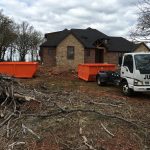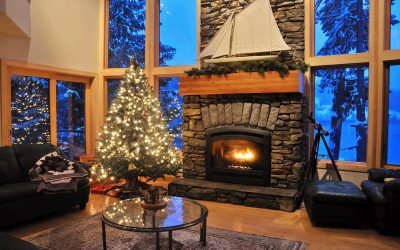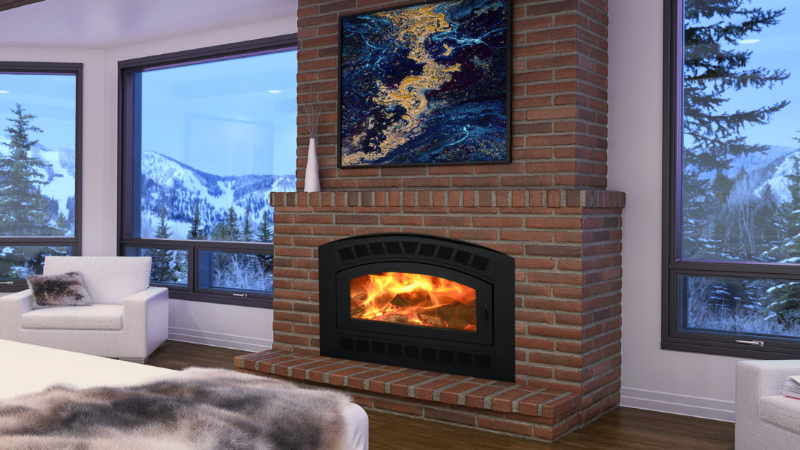When efficiency is important, and when you want a fireplace in a room where a traditional chimney may be very costly or even impossible, a direct vent gas fireplace is the perfect option.
These fireplaces are not your typical gas insert or a wood burning fireplace, but a stepped up version of each. As they are burning gas there is no need to buy, chop or haul wood, no ashes to clean, and turning on and off is controlled by a switch on the wall or even a handy remote.
Additionally, the media used to create the look of the fireplace can include a wide range of different types of designs, allowing the fireplace to be specially coordinated with your room. You can choose between larger rocks, traditional logs or driftwood looks, or even unique glass marbles that give a very modern look.
Gas Inserts and Direct Vent Differences
A gas insert is designed to fit into an existing fireplace and to vent out of the existing chimney. Some direct vent fireplaces also vent through an existing chimney, and these are called co-linear designs. The co-axial types of direct vent gas fireplace models can vent through any wall using a specialized type of venting system that is either made of a rigid or flexible venting material.
There is also the possibility to choose a zero clearance direct vent model. This is what you will want to select if you do not have an existing fireplace in the room. These designs can literally be inset into an existing wall and, with their special insulated type of design, they are completely safe to use without the need for the firebox of brick or stone.
Efficiency
The direct vent fireplace also operates differently than traditional fireplaces in that they are highly efficient at circulating the heated air through the room, not out the chimney.
With these systems, air from outside is pulled into the home through the venting system, actually the outside layer of the pipe. This is then heated and circulated through the room by the use of a fan.
The exhaust from this heating process goes up the center component of the venting system, cooling as it leaves the fireplace. This creates the draw to pull more of the outdoor air into the system, keeping itself cycling. This natural cooling process for the exhaust also makes it safe to vent through an exterior wall, helping to reduce the cost of installation in any room of the home.








